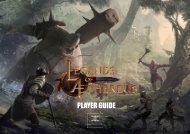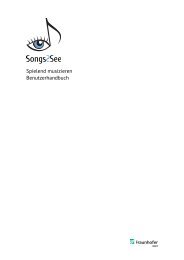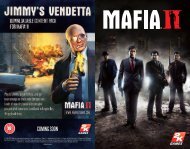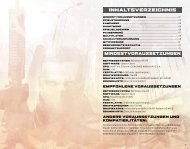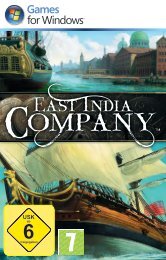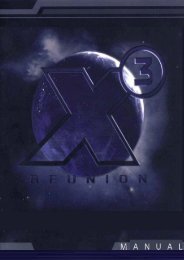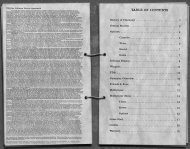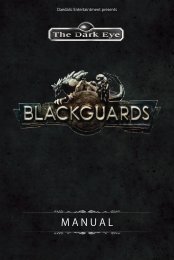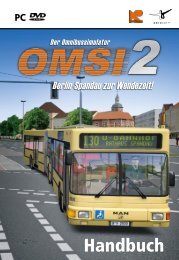You also want an ePaper? Increase the reach of your titles
YUMPU automatically turns print PDFs into web optimized ePapers that Google loves.
HEARTS OF IRON DARKEST HOUROrganisation andEntrenchmentLand forces that are constantlymoving don’t havemuch time to prepare themselvesagainst an enemyattack and have a tendency tobecome somewhat “stretchedout” or disorganised. Thesame is true of armies that areconstantly subjected to navalbarrages or aerial bombardment.DH models this aspectof war using the concepts oforganisation and entrenchment.Organisation is a measure ofthe cohesiveness of a force,which is a representation ofhow able it is to receive andrespond to orders and react tothe enemy. Morale is ameasure of the quickness withwhich your troops can regaintheir organization. Each ofyour units, be they land, navalor air, must have a sufficientlevel of organisation to engagein battle, and without it theywill break and retreat indisarray. A force that isengaged in combat will beginto lose organisation, and thelonger it continues to fight, thegreater the loss will be. Theaddition of new recruits toreplace casualties or reserveunits after mobilization (seebelow) will also reduceorganisation proportionally tothe number of newcomersadded, and if a unit finds itselfwithout a source of supply,then organisation will plummetrapidly. While moving, a unit’sorganisation will usuallyremain static unless the terrainit is traveling through cannotsupport the size of the force,or if it is moving withoutsupply. If it ceases its movementand avoids battle for awhile, then its organ-isationwill gradually recover. Themaximum organisation isdetermined by its leadershipand experience (see below)and can also be increasedthrough the research ofvarious combat doctrines andequipment advances.A land unit that is stationaryfor a time will also begin toentrench itself in a province byselecting the most defensibleground, preparing foxholesand snipers’ nests, establishingcommand and aidstations, organising munitions,and so on. This will give theunit a bonus in any subsequentdefence of that provinceand can make it difficult toovercome without a concertedeffort on the part of anattacker. The longer a forceremains in place, the more“dug in” it will become.However, this entrenchmentbonus is immediately lost ifthe unit moves, and even ifit later returns to theprovince, it must begin theprocess from scratch.Command,Leadership &ExperienceThe effectiveness of a forcerelies heavily on its combatexperience and on the leadersthat you assign to your frontlinecommands. Each time aunit engages in battle, it willgain some valuable combatexperience and through thecourse of time and repeatedconflict, it will begin performingnoticeably better. The resultingveteran units may become thebackbone of your armedforces, but as they suffercasualties, their losses will bereplenished with green recruitswhich, not surprisingly, dilutestheir effectiveness.Individual units may beinstructed to act independently,but most often you willwish to group them into largerforces, often using a mixtureof unit types to achieve thedesired overall balance andcombat effectiveness.Commanding larger numbersof units requires specialleadership skills that arepossessed by only a handfulof people, so you will need todraw from a pool of militaryleaders, assigning someone tolead each of your forces.Various leaders will havedifferent traits, so selecting theright man for the job can beextremely beneficial. Each15




